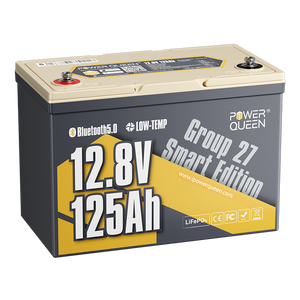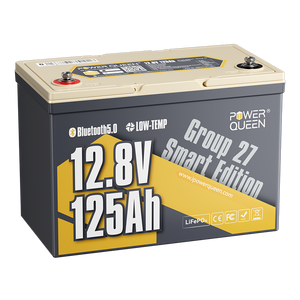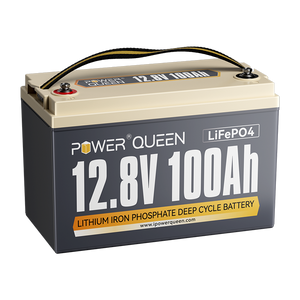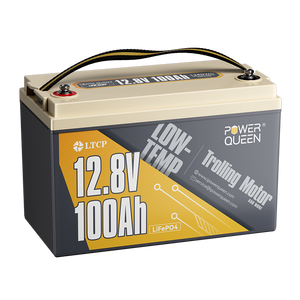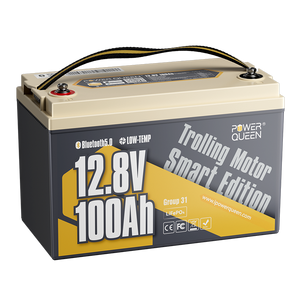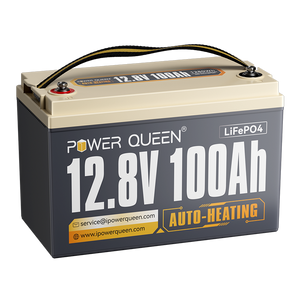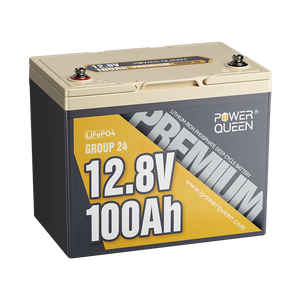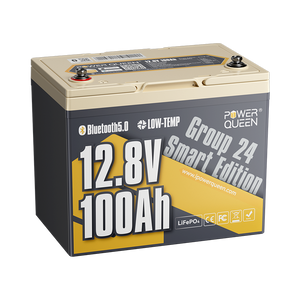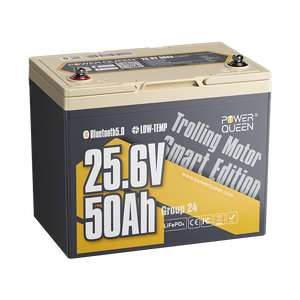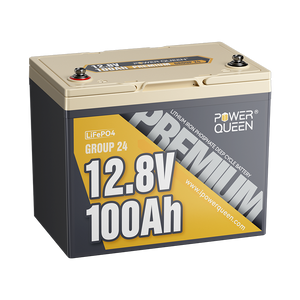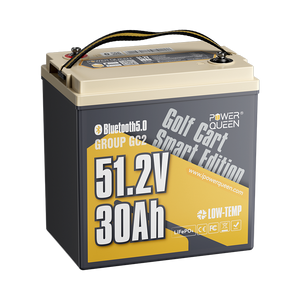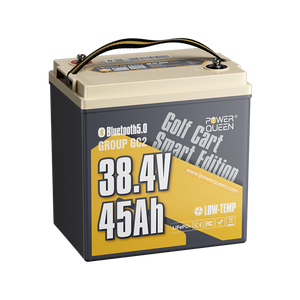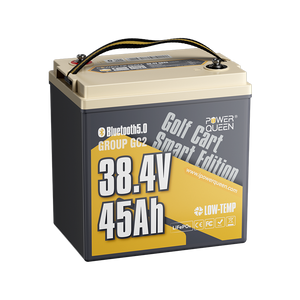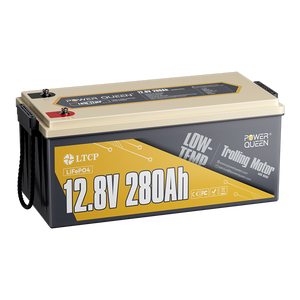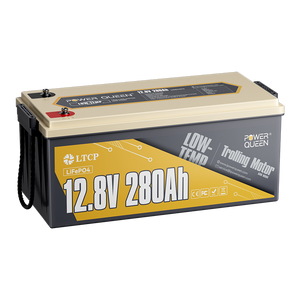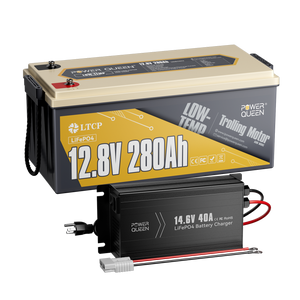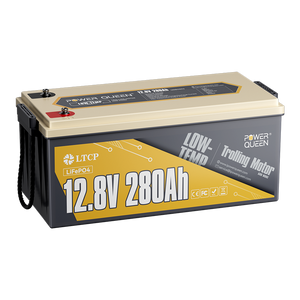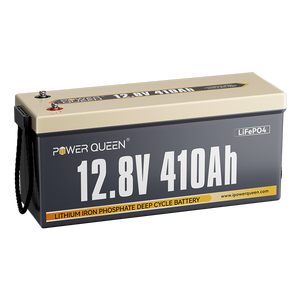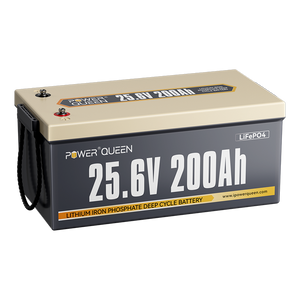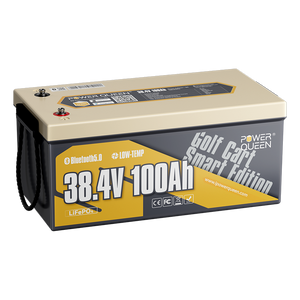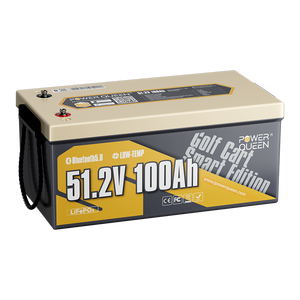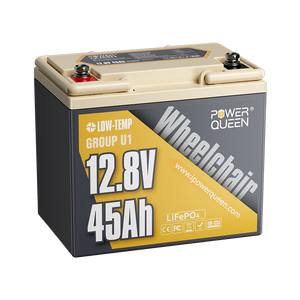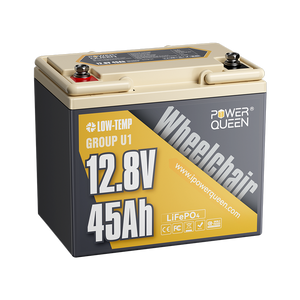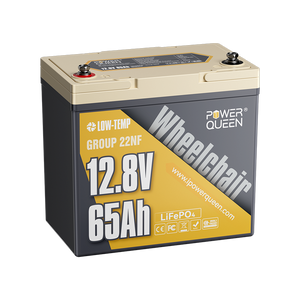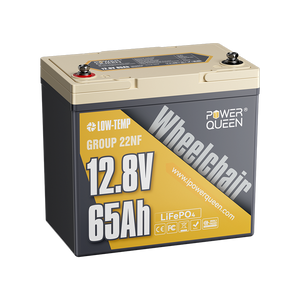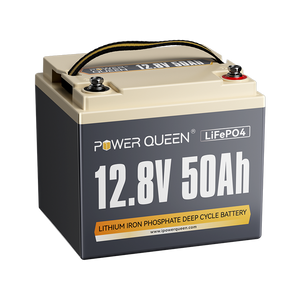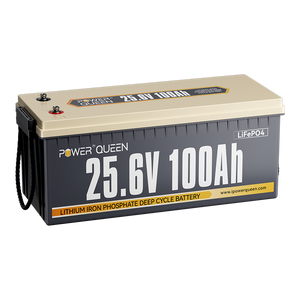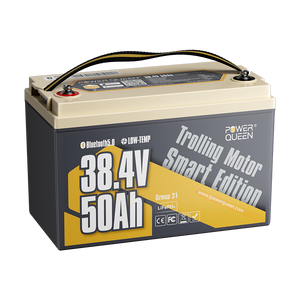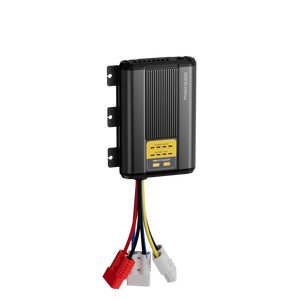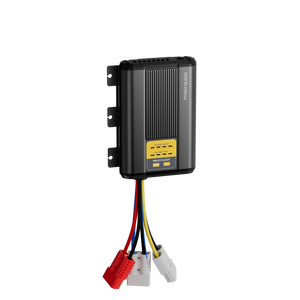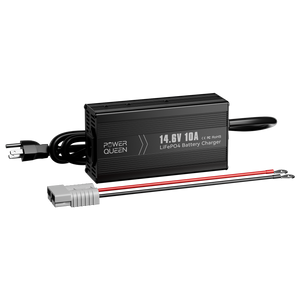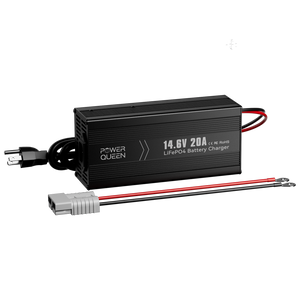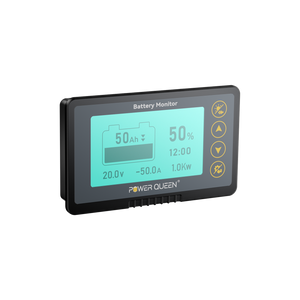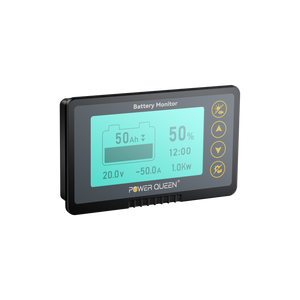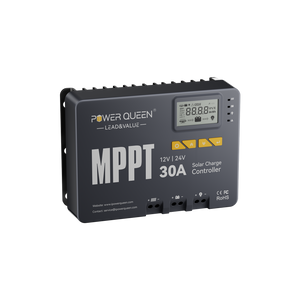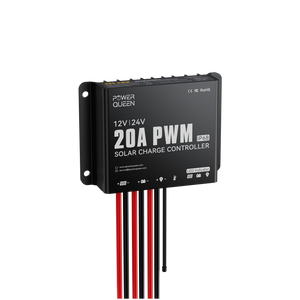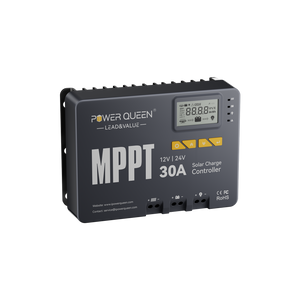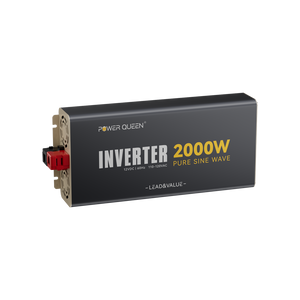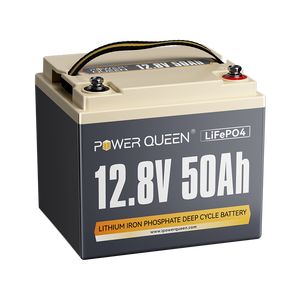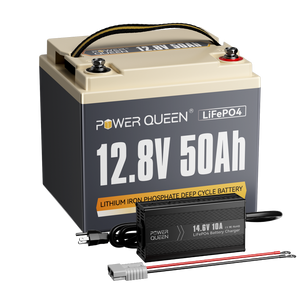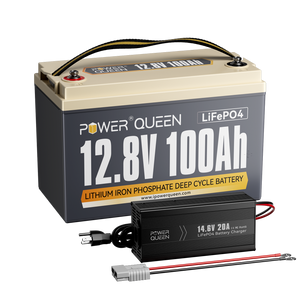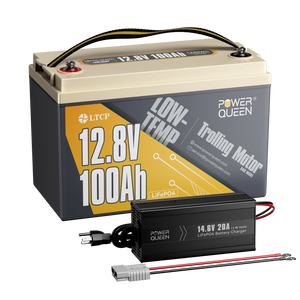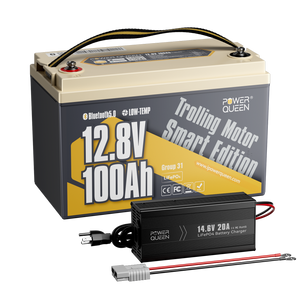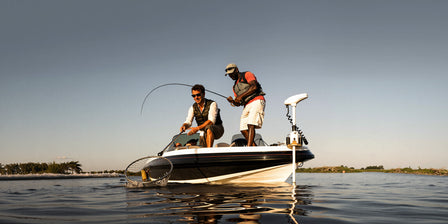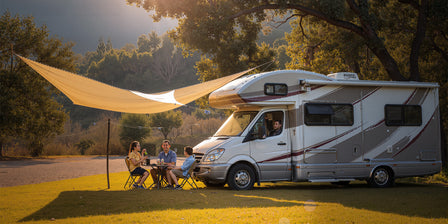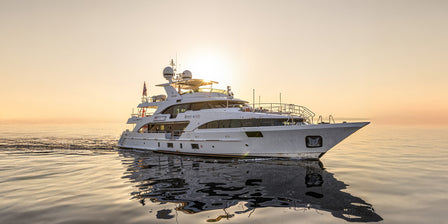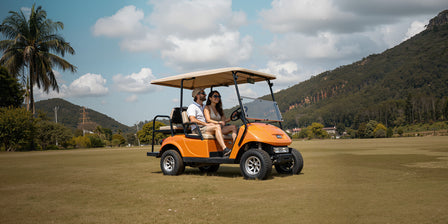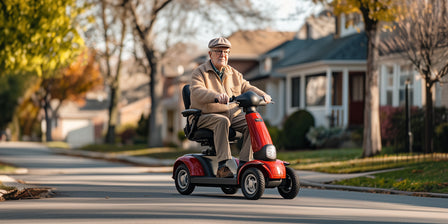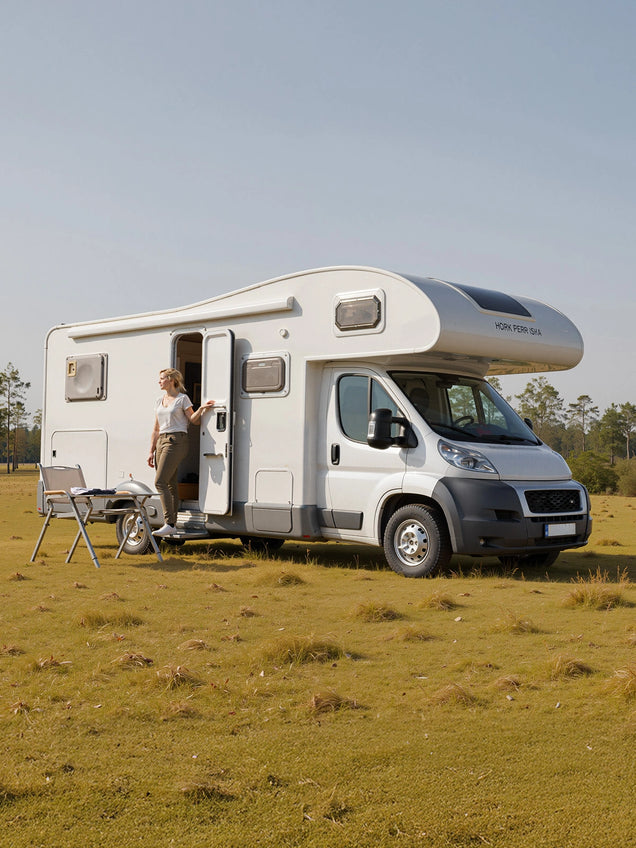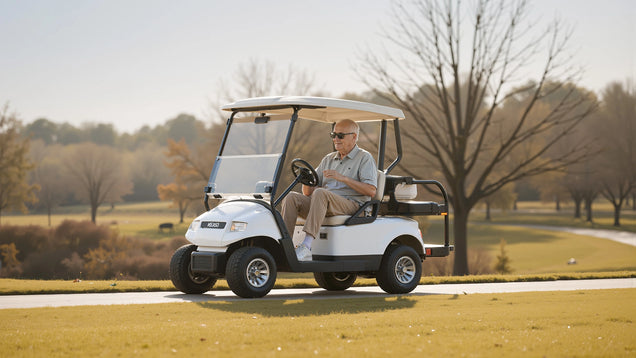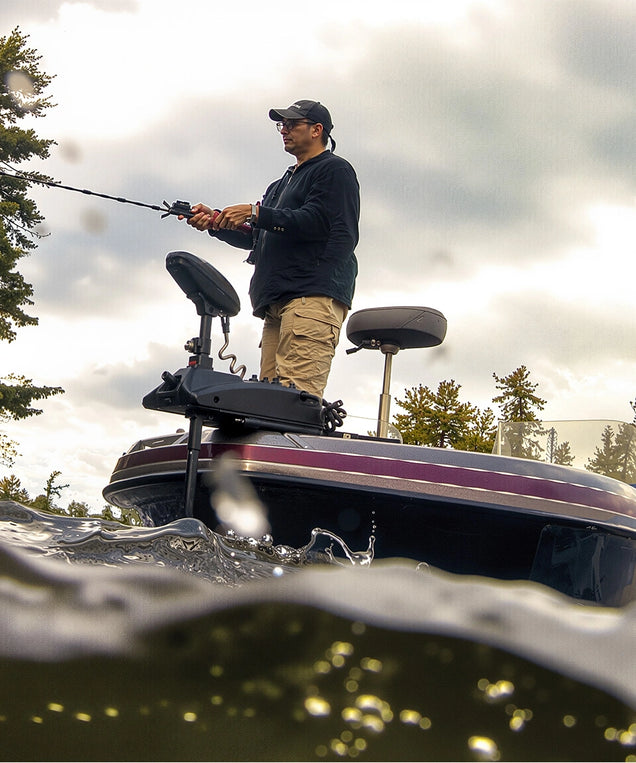What Size Lithium Battery For 12V Trolling Motor
When choosing the right lithium battery for your 12V trolling motor, several key factors must be considered to ensure optimal performance, reliability, and value. This guide will help you select the appropriate battery size, addressing common concerns such as battery capacity, runtime, compatibility, and more.
Table of Content
- Part 1. How to Calculate the Right Battery Size for Your Trolling Motor
- Part 2. Factors to Consider When Choosing the Trolling Motor Size
- Part 3. How to Choose a Trolling Motor Based on Boat Size
- Part 4. Match Voltage to Boat Size
- Part 5. Common Mistakes to Avoid When Choosing a Lithium Battery for Your Trolling Motor
- Part 6. In Conclusion
Part 1. How to Calculate the Right Battery Size for Your Trolling Motor
1.1 Step 1: Determine Your Trolling Motor's Voltage
To choose the right battery size, determine your trolling motor's voltage. For example, a 24V trolling motor requires two 12V batteries connected in series. Alternatively, simplify your setup with the Power Queen 24V 50Ah Smart Deep Cycle Lithium Battery. It offers Bluetooth monitoring, compatibility with trolling motors, and EV-grade LiFePO4 cells for exceptional performance and longevity, making it a reliable choice for your voltage needs.
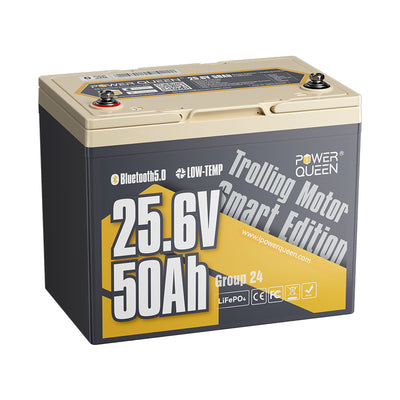

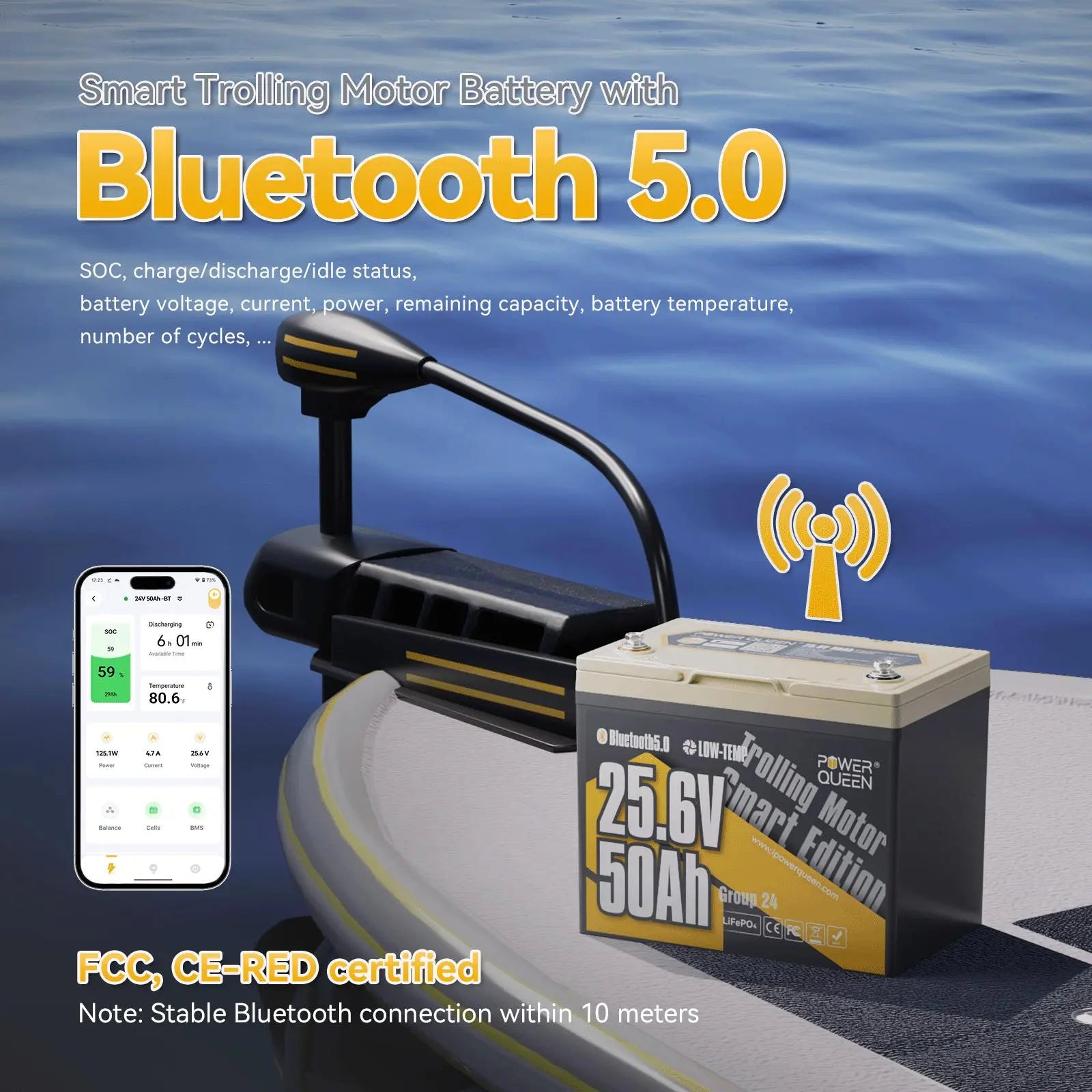
Related Reading: [Full Guide] Trolling Motor Battery System: 12V, 24V, or 36V?
1.2 Step 2: Find Your Motor’s Maximum Amperage Draw
Next, identify the motor's maximum amperage draw. This is usually listed in your motor's user manual or product specifications. The amperage draw represents how much current your motor draws under full load. Knowing this value is essential, as it helps calculate the battery’s required capacity. For example, if your motor draws 30 amps at full throttle, this number will be used in the battery capacity formula.
1.3 Step 3: Calculate the Desired Run Time
After determining the amperage draw, you’ll need to calculate how long you want the motor to run on a single charge. Multiply the motor’s amperage draw by the number of hours you plan to operate it. For example, if your motor draws 30 amps and you need it to run for 5 hours, the calculation would be:
30 amps x 5 hours = 150Ah
This means you would need a battery with at least 150Ah capacity to meet your desired run time.
Part 2. Factors to Consider When Choosing the Trolling Motor Size
2.1 Boat Weight
The weight of your boat is one of the most crucial factors when choosing a trolling motor. A general rule of thumb is that you’ll need at least 2 pounds of thrust per 100 pounds of boat weight. This ensures you have enough power to move the boat efficiently.
2.2 Water Conditions
Water conditions can significantly impact your trolling motor’s performance. If you fish in areas with strong currents or rough waves, opt for a motor with higher thrust. A powerful motor will help you navigate through these challenging conditions without losing control.
2.3 Boat Size
The size of your boat determines the motor's required power. Larger boats need motors with higher thrust to maintain optimal performance. Make sure to select a trolling motor that matches your boat’s size to avoid underperformance or excessive strain on the motor.
Related Reading: What Size Trolling Motor Do I Need [Type & Size]
2.4 Shaft Length
Choosing the correct shaft length is essential for proper motor function. A shaft that’s too short will cause cavitation, especially in rough waters, while a shaft that’s too long can make it difficult to navigate shallow areas. Find the right length for smooth and efficient operation.
2.5 Freshwater vs Saltwater
Saltwater fishing requires motors with corrosion-resistant features. If you're fishing in saltwater, always choose a trolling motor designed specifically for saltwater environments. This ensures durability and prevents damage from harsh marine conditions.
2.6 Fishing Style
Your fishing style can dictate the type of motor you need. If you need precision control for slow maneuvers, look for a motor with adjustable speed settings. A motor with fine speed control allows for greater accuracy, which is crucial for specific fishing techniques.
Related Reading: Which Batteries Are Ideal for Fishing in Cold Weather?
2.7 Voltage
Another important consideration is the voltage of your trolling motor. Higher-voltage motors offer more power, but they may require larger batteries. Ensure that your battery is capable of supporting the motor's voltage to prevent running out of power during your fishing trip.
2.8 Motor Type
There are different types of trolling motors to choose from, including bow mount, transom mount, and side mount. Your boat layout and fishing preferences will help determine which type is best for you. Make sure the motor type you choose fits your boat’s design.
2.9 Power Consumption
It’s essential to check the motor’s power consumption before purchasing. The motor's amp draw will dictate how much power your battery needs to supply. Be sure to match the motor's power requirements with a battery that can handle them to ensure consistent performance.
Part 3. How to Choose a Trolling Motor Based on Boat Size
Selecting the right trolling motor for your boat depends on its size, weight, and intended usage. Here’s a breakdown:
3.1 Determine Thrust Requirements
Thrust is the motor's power to move your boat. As a rule of thumb, you’ll need 2 pounds of thrust for every 100 pounds of your boat's weight (including passengers and gear).
For instance:
A 1,500-pound boat requires at least 30 pounds of thrust.
A 2,500-pound boat may need 50 pounds or more.
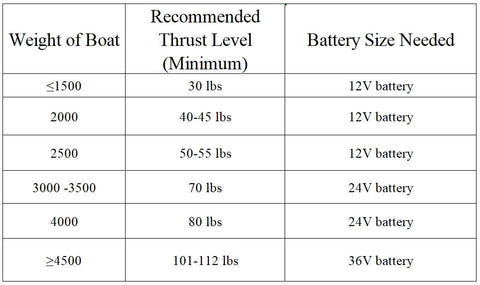
Part 4. Match Voltage to Boat Size
12V System: Best for small boats under 16 feet or lightweight vessels like kayaks or canoes.
24V System: Suitable for medium-sized boats between 16 and 22 feet.
36V System: Ideal for larger boats over 22 feet or those used in strong currents or windy conditions.
4.1 Consider Shaft Length
Shaft length ensures the motor stays submerged. Measure the distance from the mounting point to the waterline and add about 20 inches. Larger boats with higher decks may require longer shafts.
4.2 Choose Features Based on Use
For fishing in shallow waters or heavy vegetation, opt for a trolling motor with weedless propellers.
If you navigate in deeper waters, prioritize higher thrust and longer run times.
Example: For a 20-foot boat weighing 2,000 pounds, a 24V trolling motor with 50–60 pounds of thrust and an appropriate shaft length is ideal. To ensure performance, consider reliable options like the Power Queen 24V battery for efficient power and longevity.
Part 5. Common Mistakes to Avoid When Choosing a Lithium Battery for Your Trolling Motor
5.1 Choosing a Battery with Too Low of a Capacity
One of the most common mistakes is selecting a battery with insufficient capacity to save money. A battery with too low of a capacity will limit your motor’s runtime, potentially leaving you stranded during your trip. Always calculate your required capacity before purchasing.
5.2 Ignoring Battery Weight and Size Restrictions
Another mistake is failing to account for the battery's physical size and weight. Make sure the battery fits securely in your boat’s designated battery compartment without adding excessive weight. A battery that is too large or heavy could affect your boat's balance and performance.
5.3 Not Considering Charging Requirements and Time
Lastly, make sure to use the correct charger for your lithium battery. Using an incompatible charger or neglecting to allow enough time for a full charge can damage the battery and shorten its lifespan. Ensure you have the right equipment to avoid costly mistakes.
That is why it is critical that you use a charger built specifically for your battery type to ensure peak performance and avoid potential harm. Check that the charger is compatible with your battery voltage. If you are unclear, go to the table below for advice. Overcharging your battery might limit its life and cause damage. Charge your battery after each usage to avoid chronic discharge. Can LiFePO4 batteries be charged with a lead acid charger? Keep reading for details!

Part 6. In Conclusion
Choosing the right size lithium battery for your 12V trolling motor depends on key factors such as motor power, required run time, and boat conditions. By considering the motor’s amperage draw, desired runtime, and boat weight, you can select a battery with the appropriate capacity to ensure reliable performance.
Match the battery's voltage to your motor and choose a deep-cycle lithium battery for optimal efficiency and longevity. Always factor in external conditions like water type and temperature to make the best choice for your needs.
